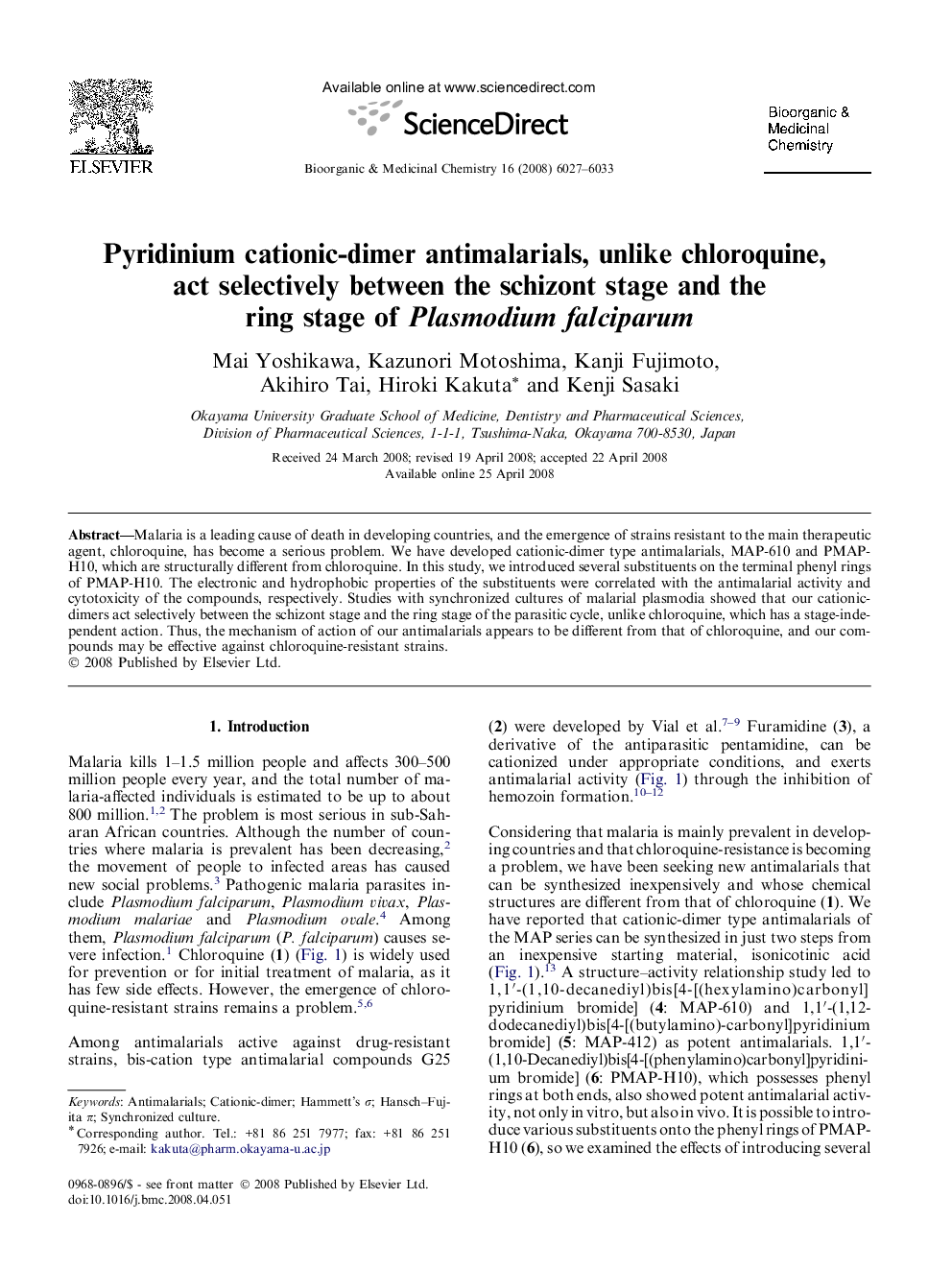| کد مقاله | کد نشریه | سال انتشار | مقاله انگلیسی | نسخه تمام متن |
|---|---|---|---|---|
| 1360722 | 981446 | 2008 | 7 صفحه PDF | دانلود رایگان |

Malaria is a leading cause of death in developing countries, and the emergence of strains resistant to the main therapeutic agent, chloroquine, has become a serious problem. We have developed cationic-dimer type antimalarials, MAP-610 and PMAP-H10, which are structurally different from chloroquine. In this study, we introduced several substituents on the terminal phenyl rings of PMAP-H10. The electronic and hydrophobic properties of the substituents were correlated with the antimalarial activity and cytotoxicity of the compounds, respectively. Studies with synchronized cultures of malarial plasmodia showed that our cationic-dimers act selectively between the schizont stage and the ring stage of the parasitic cycle, unlike chloroquine, which has a stage-independent action. Thus, the mechanism of action of our antimalarials appears to be different from that of chloroquine, and our compounds may be effective against chloroquine-resistant strains.
Cationic-dimer type antimalarials of the MAP series act selectively between the schizont stage and the ring stage of Plasmodium falciparum.Figure optionsDownload as PowerPoint slide
Journal: Bioorganic & Medicinal Chemistry - Volume 16, Issue 11, 1 June 2008, Pages 6027–6033